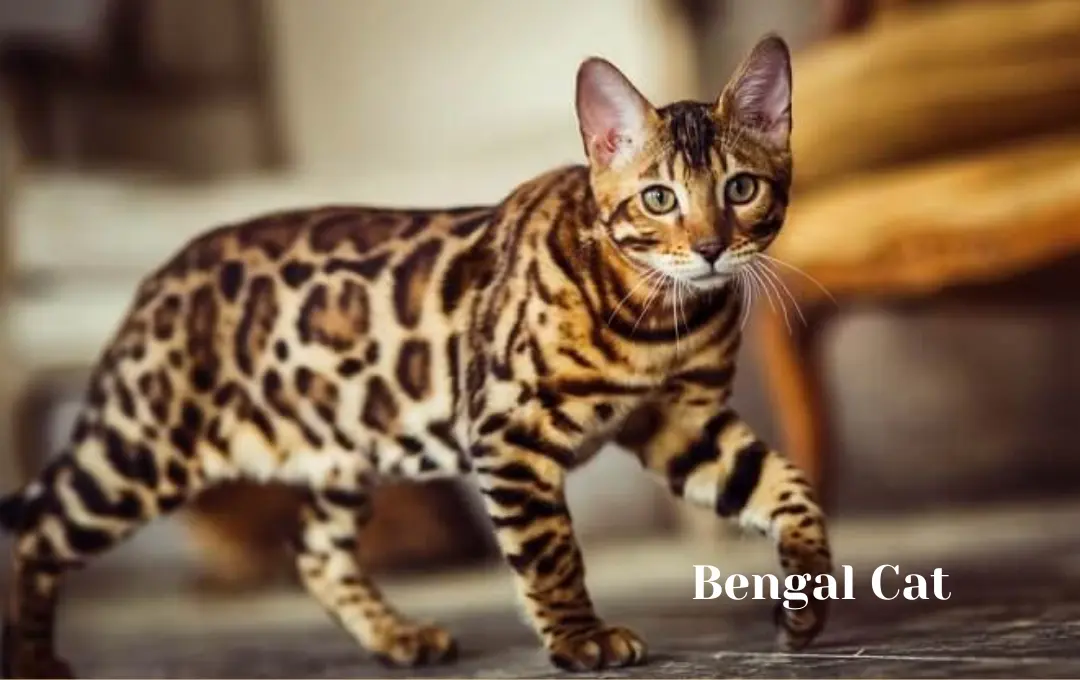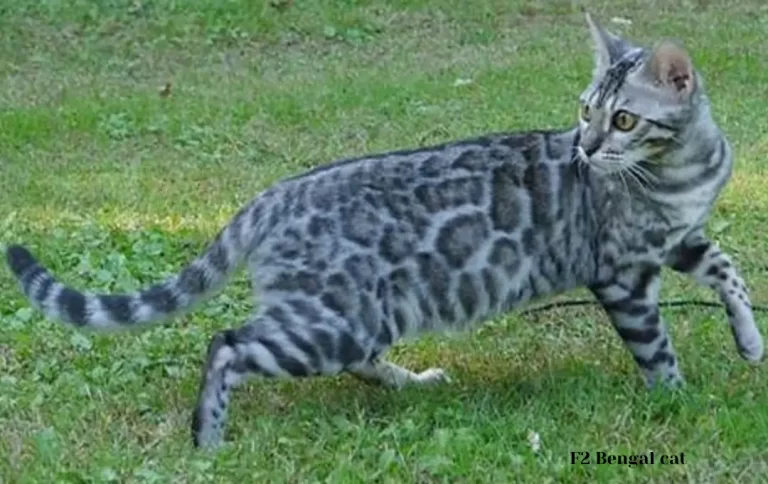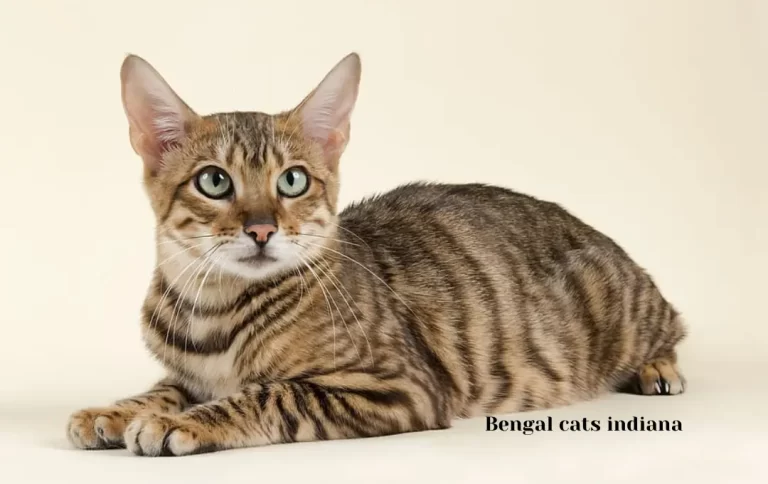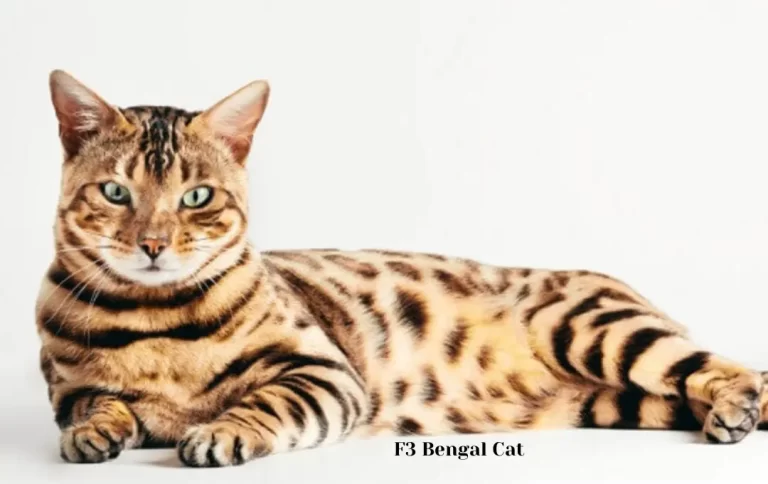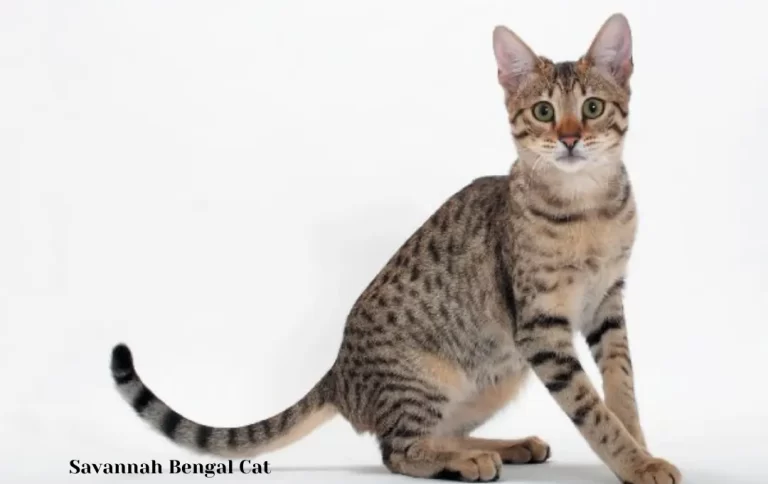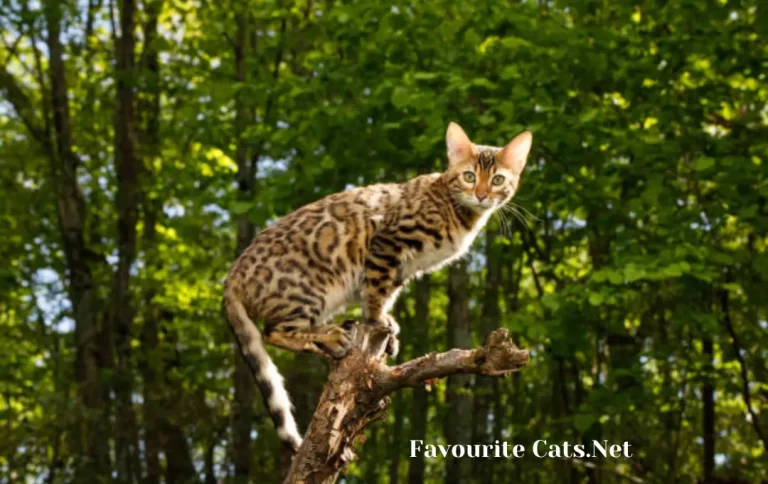Competitive Bengal Cat Price in 2023 | How Much Does a Bengal Cat Cost?
Bengal cats have established a specialized place in the world of cat lovers, captivating pet owners with their exotic looks and engaging dispositions. These felines, whose distinctive leopard-like stripes result from the mating of domestic cats with the Asian Leopard cat, have a unique and alluring appeal. Silver Bengal, White Bengal, and Snow Bengal cats all stand out among the several Bengal cat varieties thanks to their distinctive coat hues and patterns.
Bengal cats are among the most popular breeds, and since Bengal cat costs can vary greatly, potential owners are curious about the elements that affect Bengal cat prices. In this thorough post, we will examine the subtleties of Bengal cat prices, analyze factors to take into account when adopting one and stress the significance of responsible ownership.
Temptation of Bengal Cats
Bengal cats are incomparably beautiful and enthrall cat lovers everywhere. Their streamlined, muscular bodies are covered with distinctive coat patterns like rosettes, spots, and marbling, which harken back to their wild origins. Bengal cats have a graceful and mysterious presence that is enhanced by their huge, expressive eyes and quick movements. The intellect, playfulness, and friendly attitude of these felines, in addition to their exotic appearance, make them wonderful family pets as well as companions for single people and small groups.
Bengal Cat Price Range
The Bengal cat price can vary widely based on several factors, including the cat’s pedigree, coat quality, generation, and breeder reputation. On average, the price of a Bengal cat can range from $1000 to $4000 or more. However, it is not uncommon to find exceptionally rare or show-quality Bengal cats sold for prices exceeding $5000.
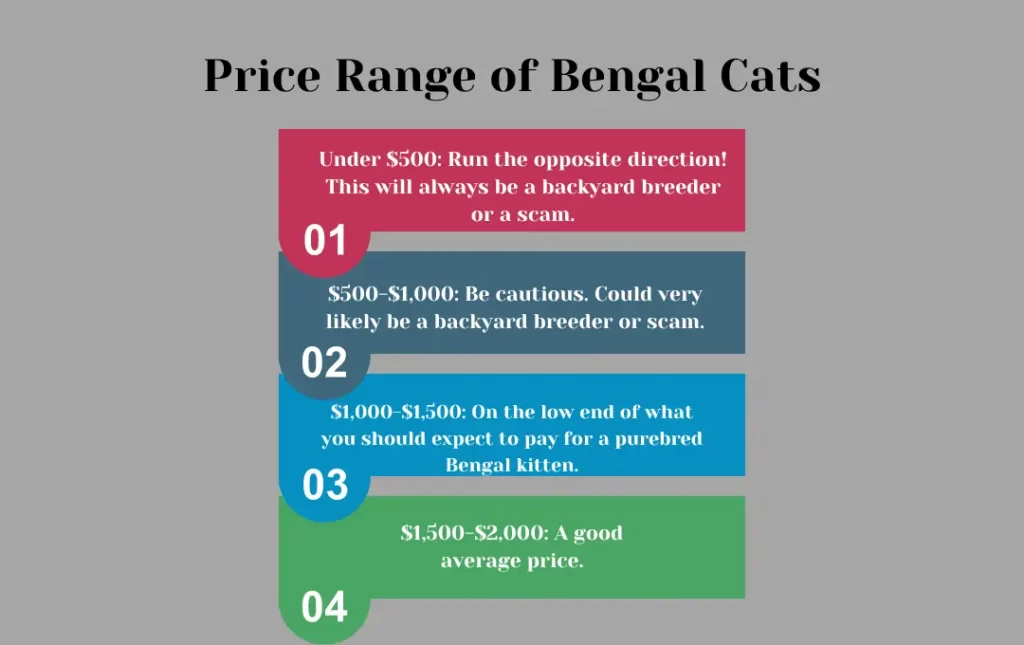
Let’s delve deeper into the factors that influence Bengal cat prices:
Pedigree and Lineage
A Bengal cat’s pedigree refers to its ancestry, which is documented through several generations. Cats with well-documented lineage from reputable breeders and a history of producing top-quality Bengal cats are more likely to command higher prices. Lineages that include champions and awards from cat shows add to the prestige and cost of the feline.
Reputable breeders carefully select Bengal cats for breeding based on their lineage, aiming to preserve and enhance desirable traits in the breed. As a result, Bengal kittens from highly regarded bloodlines are often in high demand, driving up their price.
Coat Quality and Pattern
The distinct coat patterns of Bengal cats are a crucial factor in their pricing. Bengal cats come in various coat patterns, including rosettes, spots, and marbling, resembling those of their wild ancestors, the Asian Leopard cats. Cats with exceptional coat patterns, defined rosettes, and symmetrical markings are in high demand and may command a premium price.
The coat quality and pattern are evaluated based on various factors, such as contrast (difference between the color of the spots and the background), clarity of the spots and rosettes, and overall symmetry. Cats with eye-catching coat patterns and rich colors often garner more attention from potential buyers, influencing their prices.
Generation
Bengal cats are classified into different generations based on their proximity to their wild ancestors, the Asian Leopard cats. The generation of a Bengal cat refers to how many generations it is removed from the Asian Leopard cat.
Early-generation Bengals (F1 to F3) have a higher percentage of wild genes and are relatively rare, making them more expensive. These early-generation Bengals are closer in lineage to the Asian Leopard cat and often have more pronounced wild characteristics.
Later-generation Bengals (F4 and beyond) have a higher percentage of domestic cat genes and a more domesticated temperament. As a result, they are generally more affordable and easier to handle as pets.
Show or Pet Quality
Bengal kittens destined for cat shows due to their exceptional traits and conformation are priced higher than those sold as pets. Show-quality kittens are carefully selected for their potential to excel in competitive events and contribute to responsible breeding programs.
Show-quality Bengal cats must meet specific breed standards set by cat organizations such as The International Cat Association (TICA) and the Cat Fanciers’ Association (CFA). These standards include specific coat patterns, body structure, head shape, and other characteristics that exemplify the breed’s standard.
Pet-quality Bengal cats may not meet all the requirements of the show standard but are still healthy, well-socialized, and make wonderful companions for loving homes. The price difference between show and pet-quality Bengal kittens can be significant.
Breeder Reputation
The reputation of the breeder significantly impacts Bengal cat prices. Reputable breeders with a track record of producing healthy, well-socialized kittens in ethical conditions often charge more for their cats. They invest time, effort, and resources into their breeding programs to ensure the health, temperament, and overall quality of their Bengal kittens.
Responsible breeders prioritize the health and well-being of their cats, providing them with proper veterinary care, a clean and enriched environment, and ample socialization. They are transparent about their breeding practices and are willing to answer questions from potential buyers about their Bengal cats’ lineage and care.
On the other hand, some unscrupulous breeders may offer Bengal cats at lower prices, but these cats may not receive the same level of care and attention as those from reputable breeders. Buying from a reputable breeder ensures that you are getting a healthy and well-cared-for Bengal cat.

Why do Bengal cat prices vary?
Bengal cat prices vary due to factors like lineage, coat quality, breeder reputation, and demand. High-quality markings and unique colors can drive up prices, while less distinct cats may be more affordable.
Responsible Bengal Cat Ownership
Owning a Bengal cat is a long-term commitment that requires careful consideration and preparation. These intelligent, active, and social animals thrive in environments that cater to their specific needs. Before bringing a Bengal cat into your home, consider the following aspects of responsible ownership:
Financial Commitment
The initial cost of acquiring a Bengal cat is just the beginning of the financial commitment. Responsible ownership entails providing proper nutrition, regular veterinary care, grooming supplies, toys, scratching posts, and other necessary supplies. Bengal cats have specific dietary requirements and may require a high-quality diet to maintain their health and well-being.
Routine veterinary check-ups are essential to monitor your Bengal cat’s health and catch any potential health issues early. It is essential to budget for these ongoing expenses to ensure your feline companion receives the best care possible.
Time and Attention
Bengal cats are highly intelligent and active animals that require mental and physical stimulation. They thrive on interactive play and social interaction with their owners. Neglecting their need for mental and physical enrichment can lead to boredom-related behavioral issues.
Allocate time each day for interactive play sessions with your Bengal cat to keep them engaged and mentally stimulated. Puzzle toys, interactive feeder toys, and playtime with feather wands are excellent ways to keep your Bengal cat mentally and physically active.
Space and Enrichment
Bengal cats are known for their love of climbing and exploring. Providing them with ample vertical space, such as cat trees or shelves, allows them to satisfy their natural climbing instincts. Additionally, offering various toys and enrichment activities will keep your Bengal cat entertained and prevent boredom.
Cat-proofing your home is also essential, as Bengal cats are curious and may get into mischief if they find items that pique their interest. Ensure all potentially harmful substances and plants are out of reach, and keep electrical cords secured to prevent accidents.
Understanding Behavior
Bengal cats, with their wild ancestry, may exhibit behaviors that differ from other domestic breeds. Climbing curtains, vocalizations, and assertiveness are some examples of their unique behaviors. Understanding and accepting their individual personalities will foster a harmonious relationship.
Training and positive reinforcement can help modify unwanted behaviors and strengthen the bond between you and your Bengal cat. However, it is essential to remember that they are individuals with their own unique quirks and preferences.
Training and Socialization
Early training and socialization are essential for Bengal cats to ensure they grow into well-behaved and confident adults. Socialize your Bengal kitten with various people, animals, and environments from a young age to help them adapt to different situations.
Positive reinforcement training is effective in teaching Bengal cats basic commands and encouraging good behavior. Reward-based training helps build trust and strengthens the bond between you and your feline companion.
Health Care
Bengal cats are generally healthy cats, but like all breeds, they are susceptible to certain health issues. Responsible ownership includes providing routine veterinary check-ups, vaccinations, and preventive care to keep your Bengal cat in the best health possible.
Common health issues in Bengal cats may include hypertrophic cardiomyopathy (HCM), a heart condition that can be screened for through genetic testing. Responsible breeders will conduct appropriate health screenings on their breeding cats to minimize the risk of hereditary diseases in their kittens.
Balanced Nutrition
a. High-Quality Protein: Bengal cats possess their ancestors’ carnivorous traits, making protein an essential component of their diet. Opt for premium cat foods that list meat as the primary ingredient, preferably poultry or fish sources. This protein-rich diet supports their lean muscle mass and overall energy levels.
b. Limited Carbohydrates: Keep carbohydrates in check to prevent unnecessary weight gain and potential health issues. Look for cat foods that contain minimal fillers and focus on nutrient-rich ingredients like sweet potatoes or peas.
c. Essential Fatty Acids: Incorporate omega-3 and omega-6 fatty acids to maintain your Bengal cat’s sleek coat and healthy skin. These nutrients also contribute to overall immune system function.
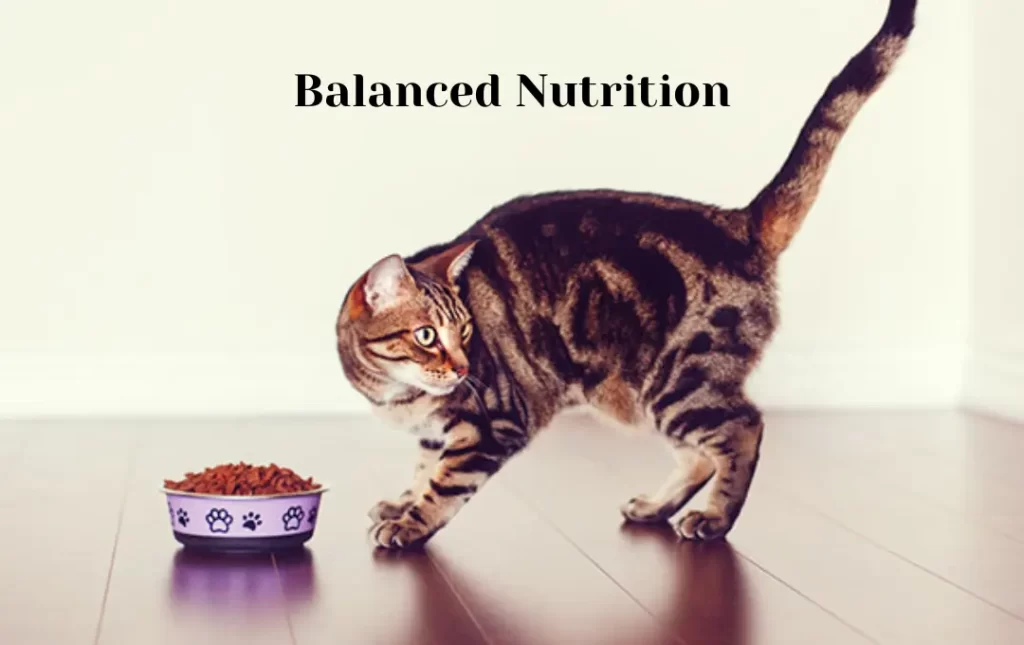
Hydration Matters
Fresh Water Availability: Always provide a clean and easily accessible source of freshwater. Proper hydration is essential for digestion, circulation, and overall well-being.
Portion Control
Feeding Guidelines: Consult your veterinarian to determine the appropriate portion sizes for your Bengal cat based on their age, weight, and activity level. Overfeeding can lead to obesity, while underfeeding can result in malnutrition.
Health Maintenance
a. Regular Veterinary Check-ups: Schedule routine check-ups with a veterinarian to monitor your Bengal cat’s health and catch any potential issues early on.
b. Vaccinations: Ensure your Bengal cat is up-to-date with vaccinations to protect them from common feline diseases. Discuss a suitable vaccination schedule with your vet.
c. Parasite Prevention: Administer regular flea, tick, and internal parasite treatments as recommended by your veterinarian.

Mental and Physical Stimulation
Enrichment Activities: Bengal cats are highly active and intelligent. Engage them in interactive play sessions, provide puzzle toys, and create vertical spaces to satisfy their curiosity and keep them mentally stimulated.
Grooming
Coat Care: Bengal cats boast a distinctive, luxurious coat. Brush their fur regularly to reduce shedding and prevent matting. Grooming also offers an opportunity for bonding with your feline friend.
Special Dietary Considerations
Allergies or Sensitivities: If your Bengal cat has allergies or sensitivities, consult your veterinarian to select a suitable hypoallergenic diet that meets their nutritional needs.
Adopting a Bengal Cat
Adopting a Bengal cat from a rescue group or a Bengal-specific rescue is an excellent alternative to buying a Bengal cat from a reputable breeder. Bengal cats can wind up in shelters or rescues for a variety of reasons, including changes in their owners’ circumstances or a lack of knowledge regarding the needs unique to the breed.
When adopting a Bengal cat, you are giving a loving home to a cat in need, and you may find adult Bengal cats that are already well-socialized and ready to be part of your family. Adoption fees are generally more affordable than purchasing from a breeder, and many rescue organizations include vaccinations and spaying/neutering in the adoption fee.
Rescue and Adoption: While many people seek Bengal kittens from breeders, consider exploring rescue organizations and shelters. You may find Bengal cats available for adoption at a significantly lower cost, and you’ll be providing a loving home to a cat in need.
Ongoing Expenses: When considering the price of a Bengal cat, it’s important to think beyond the initial purchase. Factor in ongoing expenses such as food, litter, toys, grooming, and regular veterinary care. Bengal cats are known for their playful nature, so budget for enrichment toys and activities as well.
Payment Plans and Financing: Some breeders offer payment plans or financing options to make purchasing a Bengal cat more manageable. This can help spread the cost over time.
Breed-Specific Clubs and Associations: Joining Bengal cat clubs and associations can provide valuable resources and connections within the Bengal cat community. These organizations often have breeder directories and may host events where you can meet breeders and learn more about the breed.
Imported Bengals: Occasionally, Bengal cats may be imported from other countries, which can increase their price due to transportation and importation costs. These cats may have unique pedigrees or qualities not commonly found in domestic Bengals.
Long-Term Value: Bengal cats are known for their longevity and can live well into their teens with proper care. Consider the long-term value of your investment in a Bengal cat, as the joy and companionship they provide can be priceless over their lifetime.
Health Insurance: Purchasing health insurance for your Bengal cat can help offset unexpected medical expenses. While it adds to the overall cost, it provides peace of mind knowing that your cat’s health is financially protected.
Education and Preparation: Before bringing a Bengal cat home, invest time in learning about the breed’s specific needs and behaviors. Proper preparation can help you avoid costly mistakes and ensure a happy and healthy life for your cat.
Frequently Asked Questions
Conclusion
Owning a Bengal cat is a rewarding journey that comes with the responsibility of providing them with love, care, and a stimulating environment. The Bengal cat’s price can vary significantly based on factors such as pedigree, coat quality, generation, and breeder reputation. Prospective owners should thoroughly research breeders, prepare financially, and ensure they have the time and dedication required to care for these magnificent felines.
Responsible ownership involves financial commitment, time and attention, space and enrichment, understanding behavior, and providing proper health care. It also includes training and socialization to ensure that Bengal cats grow into well-adjusted and happy members of the family.
Whether you choose to purchase from a reputable breeder or adopt from a rescue, welcoming a Bengal cat into your home can be a life-changing experience. Their intelligence, playfulness, and affectionate nature make them wonderful companions for those willing to embrace their unique personalities and meet their specific needs.
Remember, being a responsible Bengal cat owner means providing a loving and nurturing home, where your feline friend can thrive and bring joy to your life for many years to come.

